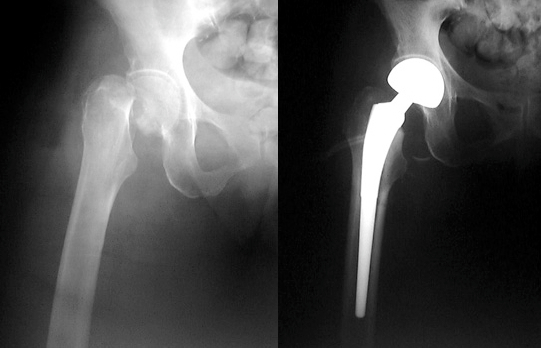Hip Fractures
More than 270,000 hip fractures occur in the United States each year, with about 90% of them occurring in people older than 60. Hip fractures are more common in older people because of osteoporosis and because older people are more likely to fall.
There are two common types of hip fractures. Femoral neck or subcapital hip fractures occur in the neck of the femur. Intertrochanteric fractures occur in the large bony bumps (trochanters) where the powerful muscles of the buttocks and legs attach. When the fracture is not too severe, metal pins can be inserted surgically to support the femoral head. This surgical procedure preserves the person’s own hip joint.
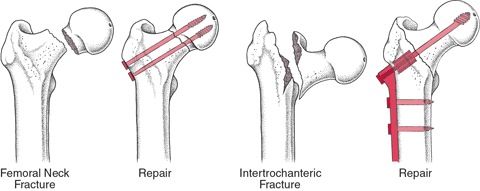
Hip Fractures
Intertroch & Subtroch Fracture
Must be non-weight bearing for six weeks or until signs of healing.

Intertroch Fracture Fixation with Dynamic Hip Screw
Intertroch Fracture Fixation with Intramedullary Rod
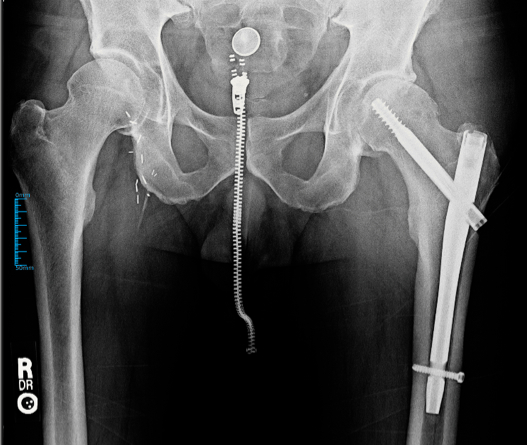
Femoral Neck Fracture
An x-ray usually shows an obvious fracture and can help a doctor confirm the diagnosis. However, faint fracture lines may not be seen initially on x-ray. Thus, when a person continues to have pain and is unable to stand a day or more after a fall, the x-ray may have to be repeated or a magnetic resonance imaging (MRI) or bone scan obtained.
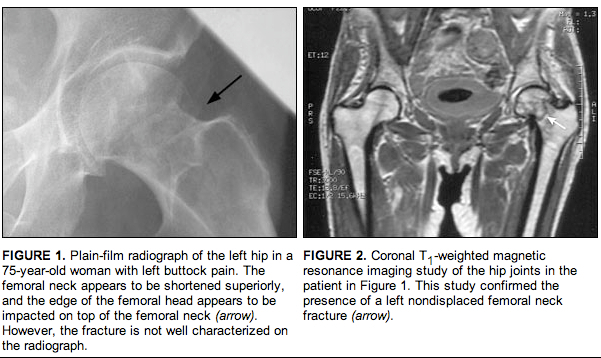
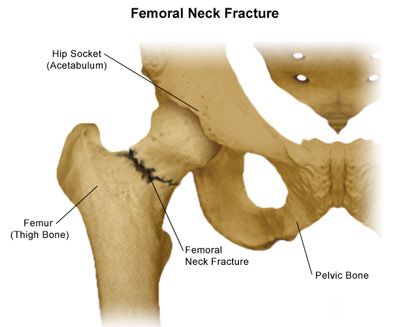
Femoral Neck Pinning
(For Non-Displaced fracture)
Must be non-weight bearing for six weeks or until signs of healing.
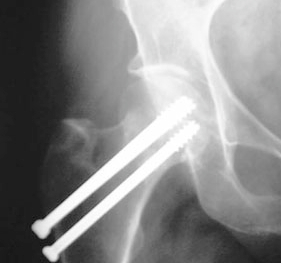
Femoral Neck Fracture Treatment with Surgical Screws
Bipolar or Partial Hip replacement
(For Displaced Femoral Neck Fractures)
If the Hip is arthritic, A Total Hip Replacement may be appropriate.
Full weight bearing post surgery.
